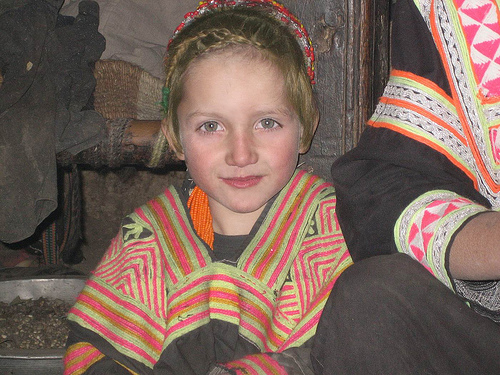As to phenotype versus genotype, I think the correlation depends on the area. In some places, people look pretty homogenous, and so they could be led to believe that the two perfectly correlate. That's not true in Italy, at least. I think the thread I mentioned shows a variety of "looks", but on a genetic test like 23andme, the people are almost identical, as they are in admixture analyses like Dodecad.
ANGELA
----------------------------
MOESAN
I answer you:
phenotypes and genotypes? I fact we speak here of visible phenotypes, which could reflect totally or NOT the genotypes implied in the esternal aspect -
the external (for the most here, the head) features we show reflect generally our genotypes for the concerned traits, except some cases of heterozygoty for a feature where one parental gene is dominant (possible eplanation for 'dinaric'?), and taking in account some slight modifications linked to way-of-life/external pressions -
but when we speak about
autosomals analysis we speak of a roughly (but valuable nevertheless, in some way) bought criteria table used to can devine the admixture of genes attributed to diverse origins populations in individuals - keeping aside the imperfections of such a system of analysis,
we know that the genes involved in the visible features (bones, meat, flesh, pillosity, pigmentation...) are just a very small part of the whole -
so, it's not surprising to find indiviudals with, say, same head aspect and almost completely different whole genome, and individuals with different head features and very close whole genome, even without speaking about dominance, penetrance or congenital accident;
it's easy to controle in the same family brethren were autosomals admixtures are very close in all, and external features different -
that said, with a little bit of chance, we know that statistically, external sets of features shared by the majority of a rather homogenous population will not be found often ALL OF THEM in members of an other rather homogenous population very different by origins, even if somme crossings occurred between these two populations -
some traits can be associated by linkage, but even in this case long crossigns between populations finish to separate them in individuals: it explain the very huge diversity among individuals of a same population, sometimes the same family - but when in a crossng an homogenous enough population of origin is NUMERICALLY dominant, its common features too emerge as dominant, and the "set" of origin rather complete - when a final population is the result of a big number of different basic populations, it is very difficult to find a complete "set" of features in an individual - I think, without scientific basis just observation, than even in skull alone, there are more than one pair of genes at play, and that a skull could be divided in a number of parts or bone eahc of them having is genetic determination - only a bet here, again.
that said, a new mutation can produce a little difference in some individuals without being generalized to the whole population and so, has not to be taken a proof of new crossing.
If it is too well known (it is possible for a lot here, because there are here some well informed persons) and seems a useless repetition I beg your pardon.
have a good night full of discoveries dreams!
Oidhche mhath


